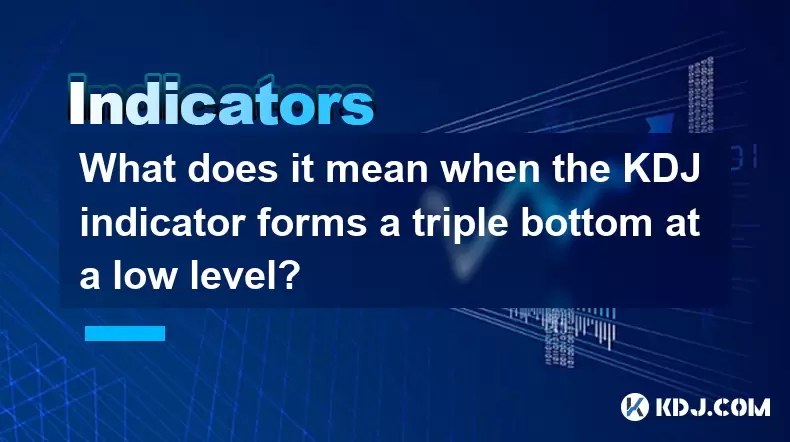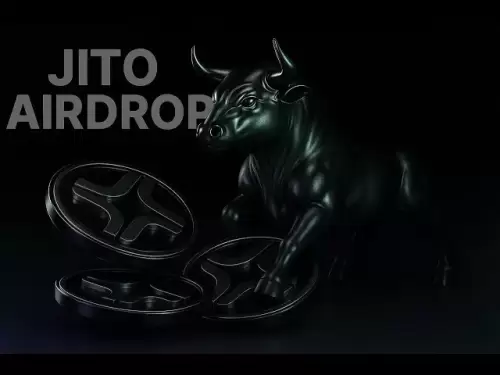-
 Bitcoin
Bitcoin $118600
0.36% -
 Ethereum
Ethereum $3855
1.06% -
 XRP
XRP $3.195
-0.09% -
 Tether USDt
Tether USDt $1.000
-0.04% -
 BNB
BNB $844.5
6.23% -
 Solana
Solana $191.3
2.83% -
 USDC
USDC $0.9997
-0.01% -
 Dogecoin
Dogecoin $0.2376
0.10% -
 TRON
TRON $0.3242
0.83% -
 Cardano
Cardano $0.8222
0.13% -
 Hyperliquid
Hyperliquid $45.26
6.53% -
 Sui
Sui $4.200
-2.56% -
 Stellar
Stellar $0.4336
-1.24% -
 Chainlink
Chainlink $18.86
0.28% -
 Hedera
Hedera $0.2796
-1.75% -
 Bitcoin Cash
Bitcoin Cash $583.3
-1.84% -
 Avalanche
Avalanche $27.06
8.09% -
 Litecoin
Litecoin $112.3
-1.16% -
 Toncoin
Toncoin $3.353
0.58% -
 UNUS SED LEO
UNUS SED LEO $8.968
-0.11% -
 Shiba Inu
Shiba Inu $0.00001395
-0.54% -
 Ethena USDe
Ethena USDe $1.001
-0.03% -
 Uniswap
Uniswap $10.76
0.69% -
 Polkadot
Polkadot $4.175
0.26% -
 Monero
Monero $326.7
1.07% -
 Bitget Token
Bitget Token $4.665
1.61% -
 Dai
Dai $0.9998
-0.02% -
 Pepe
Pepe $0.00001271
0.32% -
 Cronos
Cronos $0.1416
2.01% -
 Aave
Aave $299.3
1.15%
What does it mean when the KDJ indicator forms a triple bottom at a low level?
The KDJ triple bottom is a bullish reversal pattern forming when %K and %D hit three lows near oversold levels, signaling rising buying momentum in crypto trading.
Jul 28, 2025 at 12:22 am

Understanding the KDJ Indicator and Its Components
The KDJ indicator is a momentum oscillator widely used in technical analysis within the cryptocurrency trading space. It consists of three lines: the %K line, the %D line, and the %J line. The %K line reflects the current closing price relative to the price range over a specific period, typically 9 days. The %D line is a moving average of %K, usually over 3 periods, and acts as a signal line. The %J line represents the divergence of %K from %D and is calculated as 3 × %K – 2 × %D, making it the most sensitive of the three.
When analyzing the KDJ, traders monitor crossovers, divergences, and extreme values to anticipate potential trend reversals. The indicator operates on a scale from 0 to 100, with readings below 20 generally considered oversold and above 80 deemed overbought. A triple bottom formation at a low level occurs when the KDJ lines, particularly the %K and %D, repeatedly touch or dip near the oversold zone and rebound, forming three distinct troughs at roughly the same level before initiating an upward movement.
What Constitutes a Triple Bottom in the KDJ?
A triple bottom pattern in the KDJ indicator appears when the %K and %D lines form three consecutive lows near or within the oversold region (typically below 20), with each low occurring at a similar level, followed by a higher rebound each time. This pattern suggests that selling pressure is diminishing and buying momentum is gradually increasing.
Key characteristics include:
- All three troughs occur at or near the same support level on the KDJ chart.
- Each rebound after a low is stronger, indicating growing bullish sentiment.
- The %J line often plunges below 0 during the lows, reinforcing oversold conditions.
- The final breakout occurs when the %K line crosses above the %D line from below, confirming the reversal.
This formation is considered a bullish reversal signal, especially when it appears after a prolonged downtrend in a cryptocurrency’s price chart.
How to Identify a Valid Triple Bottom in KDJ
To confirm a legitimate triple bottom in the KDJ indicator, traders should follow these verification steps:
- Check the time frame: Use a consistent chart interval such as 4-hour or daily to avoid noise. The pattern should be visible across at least three distinct price cycles.
- Verify oversold conditions: Ensure each bottom forms when the %K and %D are below 20. A reading below 10 strengthens the signal.
- Observe volume or price confirmation: Although the KDJ is a standalone oscillator, it’s more reliable when the underlying cryptocurrency price also forms a triple bottom on the candlestick chart.
- Look for bullish crossovers: After the third bottom, a %K crossing above %D while both are still in the low zone confirms momentum shift.
- Monitor the %J line recovery: A sharp rise in the %J line from deep negative or near-zero values indicates strong reversal potential.
Failure to meet these conditions may result in a false signal, leading to premature entries.
Trading Strategy Based on KDJ Triple Bottom
Executing a trade based on a KDJ triple bottom requires precise timing and risk management. Here’s a step-by-step guide:
- Wait for the third rebound: Do not act on the first or second bottom. Patience is essential to avoid false breakouts.
- Confirm the %K/%D crossover: Enter a long position only after the %K line crosses above the %D line during the third recovery.
- Set entry point: Place the buy order slightly above the high of the candle where the crossover occurs.
- Place stop-loss: Set the stop-loss just below the lowest point of the triple bottom formation to limit downside risk.
- Determine take-profit levels: Use Fibonacci extensions or recent resistance zones on the price chart as targets. Alternatively, exit when the KDJ enters the overbought zone (above 80).
- Use position sizing: Allocate no more than 2–5% of trading capital per trade to manage risk effectively.
This strategy works best in ranging or recovering markets and should be avoided during strong downtrends unless confirmed by higher time frame analysis.
Common Pitfalls and How to Avoid Them
Traders often misinterpret KDJ signals, especially in volatile crypto markets. Awareness of these pitfalls improves accuracy:
- Ignoring market context: A triple bottom in KDJ during a strong bearish trend may fail. Always check the overall trend using moving averages or trendlines.
- Overreliance on KDJ alone: Combine with RSI, MACD, or volume indicators for confirmation. For example, rising volume during the third rebound supports bullish sentiment.
- Trading on low time frames: Short intervals like 5-minute charts generate excessive noise. Stick to 1-hour or higher for reliable patterns.
- Premature entry: Jumping in after the first or second bottom increases risk. Wait for full pattern completion.
- Neglecting cryptocurrency fundamentals: Sudden news or exchange outages can invalidate technical patterns. Stay updated on project developments and macro events.
Avoiding these errors enhances the probability of successful trades based on KDJ triple bottom signals.
Frequently Asked Questions
Can the KDJ triple bottom appear in overbought regions?
No, a triple bottom is inherently a low-level pattern formed in oversold conditions. If three lows appear in the overbought zone (above 80), it may indicate a triple top bearish reversal, not a bottom.
Does the KDJ triple bottom work on all cryptocurrencies?
It can appear on any crypto asset, but effectiveness varies. Major coins like Bitcoin and Ethereum with high liquidity tend to produce more reliable signals. Low-cap altcoins with erratic price action may generate frequent false patterns.
How long should I wait for confirmation after the third bottom?
Wait for the %K line to cross above %D and close above it. This may take one to three candles depending on the time frame. Impulsive entries without confirmation often lead to losses.
Is the KDJ triple bottom more reliable on daily or weekly charts?
Yes, the signal is stronger on higher time frames like daily or weekly because they filter out short-term volatility. A triple bottom on a weekly KDJ carries more weight than one on a 1-hour chart.
Disclaimer:info@kdj.com
The information provided is not trading advice. kdj.com does not assume any responsibility for any investments made based on the information provided in this article. Cryptocurrencies are highly volatile and it is highly recommended that you invest with caution after thorough research!
If you believe that the content used on this website infringes your copyright, please contact us immediately (info@kdj.com) and we will delete it promptly.
- Avalanche (AVAX) Price Pump Incoming? Analysts Weigh In
- 2025-07-29 06:50:12
- Presales, Investment, July 2025: What's Hot and What's Not
- 2025-07-29 06:30:12
- PayPal, Bitcoin, and Merchants: A New Era of Commerce?
- 2025-07-29 07:10:13
- RUVI Token's Ripple Rally Potential: Audited AI Crypto Heats Up!
- 2025-07-29 04:50:12
- ADA Price, Cardano, SUI & Remittix: Decoding the Latest Crypto Moves
- 2025-07-29 04:50:12
- Solana, ARK Invest, and Staking: A New Era of Institutional Crypto?
- 2025-07-29 05:30:12
Related knowledge

What does it mean when the EMA combination crosses upward for the first time after sideways trading?
Jul 28,2025 at 03:43pm
Understanding the EMA and Its Role in Technical AnalysisThe Exponential Moving Average (EMA) is a widely used technical indicator in cryptocurrency tr...

What signal does the ROC send when it rises rapidly from a low level and breaks through the zero axis?
Jul 27,2025 at 10:15am
Understanding the Rate of Change (ROC) IndicatorThe Rate of Change (ROC) is a momentum-based oscillator used in technical analysis to measure the perc...

What does it mean when the price breaks through the double bottom neckline and the moving averages are arranged in a bullish pattern?
Jul 28,2025 at 10:57am
Understanding the Double Bottom PatternThe double bottom is a widely recognized reversal chart pattern in technical analysis, particularly within the ...

What signal does the DMA fast line cross the slow line above the zero axis?
Jul 28,2025 at 05:42am
Understanding the DMA Indicator and Its ComponentsThe DMA (Difference of Moving Averages) indicator is a technical analysis tool used in cryptocurrenc...

What does it mean that the rebound is blocked after the moving average is arranged in a short position for the first time?
Jul 26,2025 at 10:51am
Understanding the Short-Term Moving Average ConfigurationWhen traders refer to a 'short position arrangement' in moving averages, they are describing ...

What does it mean that the ZIGZAG low point is raised and the high point breaks through the previous peak?
Jul 28,2025 at 03:28am
Understanding the ZIGZAG Indicator in Cryptocurrency TradingThe ZIGZAG indicator is a technical analysis tool widely used in cryptocurrency trading to...

What does it mean when the EMA combination crosses upward for the first time after sideways trading?
Jul 28,2025 at 03:43pm
Understanding the EMA and Its Role in Technical AnalysisThe Exponential Moving Average (EMA) is a widely used technical indicator in cryptocurrency tr...

What signal does the ROC send when it rises rapidly from a low level and breaks through the zero axis?
Jul 27,2025 at 10:15am
Understanding the Rate of Change (ROC) IndicatorThe Rate of Change (ROC) is a momentum-based oscillator used in technical analysis to measure the perc...

What does it mean when the price breaks through the double bottom neckline and the moving averages are arranged in a bullish pattern?
Jul 28,2025 at 10:57am
Understanding the Double Bottom PatternThe double bottom is a widely recognized reversal chart pattern in technical analysis, particularly within the ...

What signal does the DMA fast line cross the slow line above the zero axis?
Jul 28,2025 at 05:42am
Understanding the DMA Indicator and Its ComponentsThe DMA (Difference of Moving Averages) indicator is a technical analysis tool used in cryptocurrenc...

What does it mean that the rebound is blocked after the moving average is arranged in a short position for the first time?
Jul 26,2025 at 10:51am
Understanding the Short-Term Moving Average ConfigurationWhen traders refer to a 'short position arrangement' in moving averages, they are describing ...

What does it mean that the ZIGZAG low point is raised and the high point breaks through the previous peak?
Jul 28,2025 at 03:28am
Understanding the ZIGZAG Indicator in Cryptocurrency TradingThe ZIGZAG indicator is a technical analysis tool widely used in cryptocurrency trading to...
See all articles

























































































